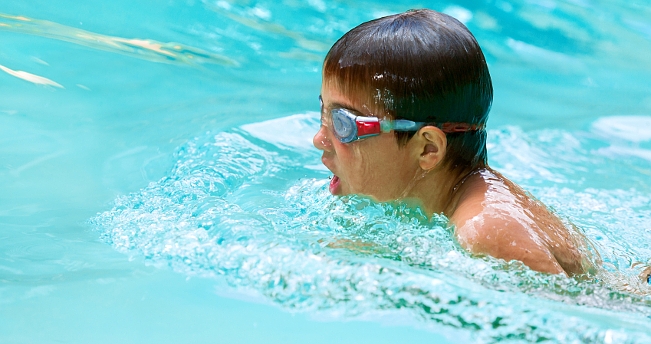Britain could become a nation of non-swimmers if drastic changes aren’t made to ensure all young people have access to adequate lessons and facilities, according to academics at the University of East Anglia (UEA).
Dr Craig Avieson and Dr Penny Lamb, of UEA’s School of Education and Lifelong Learning, warn swimming provisions are falling to secondary physical education (PE) teachers, with 51 per cent of British children aged 7-11 unable to swim 25 metres. Children should be able to swim at least that length by the time they leave primary school, under current curriculum requirements for Key Stage 2.
“It is a national problem that children cannot swim by age 11,” said Dr Avieson, who along with Dr Lamb is publishing an article in the journal Physical Education Matters, outlining findings and presenting a new training model for teachers.
“Ensuring children have basic swimming skills is the responsibility of both primary and secondary schools and this is a chance to do something about it. Teaching children such an important life skill should be a priority and there should be joined-up thinking between primary and secondary schools to address this issue.”
Lack of funding, cost of transport and limited access to a pool are considered some of the reasons for a decline in swimming provisions for primary school students.
With additional support and training for teachers, Dr Avieson and Dr Lamb believe there is hope of improving upon the findings of a 2013 Ofsted report, which showed one-fifth of 120 primary schools did not meet the required swimming standard for Key Stage 2 and in February, the government announced additional funding of £150 million a year until 2020 to improve provision of PE and sport in primary schools.
“With 51 per cent of primary school children unable to swim the minimum of 25 metres, it has become essential for secondary PE teachers to understand the fundamental, core aquatic skills of swimming and how these skills transfer to the development of swimming strokes and other aquatic activities,” said Susan Barlow, manager of the ASA’s School Swimming programme.
ASA have recently created a website aimed at teachers to provide the essential guidance and support needed to meet the Key Stage 2 National Curriculum requirements.








